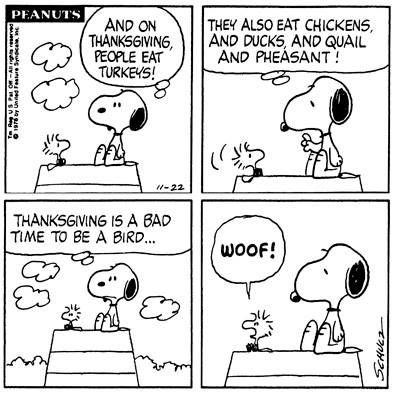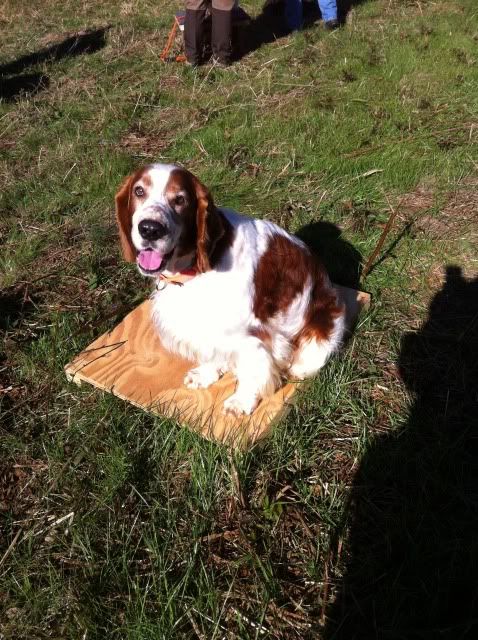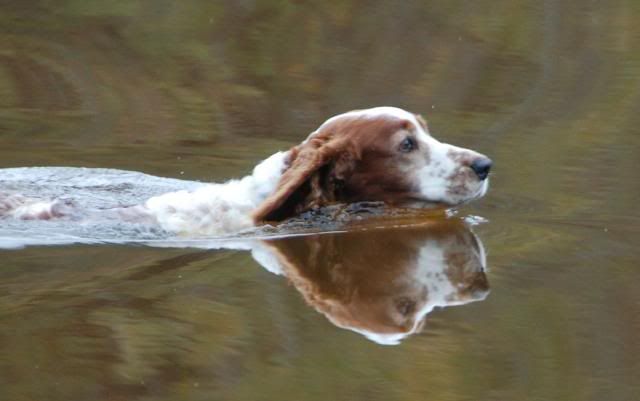Went through quite a few birds in practice today, on this weekend before Thanksgiving. I saw where Larsen was on the curve, which is to say really at the beginning. Kind of surprising that he was so far back. But we have a new approach that might help with the control and then one can always hope for rapid progression once the learning kicks in.
Sunday, November 24, 2013
Wednesday, November 20, 2013
Place board training
Trainer Joe DeMarkis confesses to a revelation: obedience training has direct applicability to a field dog. This might be obvious, or it might not, but if it is true it opens the door to many training activities that those who live in cities and suburbs can do on a weeknight without benefit of birds or firearms.
One of these revelations is the so-called place board. Joe says that dogs are place-oriented and that generalizations come hard. Train the dog to understand that his place is on the place board, and then advance to more challenging scenarios.
The place board can be as simple as a repurposed Welcome mat, but ideally, it is raised off the ground. This gives the dog bit of a feeling of not being fully in control (you are!) and it also makes it more convenient to work with smaller dogs. In the photo below, Larsen is on a place board that is raised about an inch, but other place boards are about a foot or so from the ground. The place board must be stable so that the dog is not fearful of the wobbling.
Introduce the dog to the place board by leading him or her onto it and commanding a sit. Treat liberally. Over time, you will get the dog to go to the place board on command. Once this is reliably accomplished, you can have the dog retrieve items and return to the place board.
What a great way to improve the beautiful spaniel retrieve to hand!
Larsen demonstrates his place board.
One of these revelations is the so-called place board. Joe says that dogs are place-oriented and that generalizations come hard. Train the dog to understand that his place is on the place board, and then advance to more challenging scenarios.
The place board can be as simple as a repurposed Welcome mat, but ideally, it is raised off the ground. This gives the dog bit of a feeling of not being fully in control (you are!) and it also makes it more convenient to work with smaller dogs. In the photo below, Larsen is on a place board that is raised about an inch, but other place boards are about a foot or so from the ground. The place board must be stable so that the dog is not fearful of the wobbling.
Introduce the dog to the place board by leading him or her onto it and commanding a sit. Treat liberally. Over time, you will get the dog to go to the place board on command. Once this is reliably accomplished, you can have the dog retrieve items and return to the place board.
What a great way to improve the beautiful spaniel retrieve to hand!
Larsen demonstrates his place board.
Monday, November 18, 2013
Pickup dog
The hunt test proceeded as anticipated, but not as hoped for in that Larsen showed no signs of slowing on the flush. I'm facing a decision. Shall I continue to try to get the dog study to the flush, or simply let him be a Senior Hunter and have fun and success in the field?
On the positive side, Larsen was tasked with being pick-up dog. This is the trusty dog that swims the pond to gather in the bird that another dog has refused to retrieve. It is a left-handed compliment since the pickup dog is one no longer in contention, but it is a compliment nonetheless because you want a steady dog that fetches birds expeditiously and without drama.
On the positive side, Larsen was tasked with being pick-up dog. This is the trusty dog that swims the pond to gather in the bird that another dog has refused to retrieve. It is a left-handed compliment since the pickup dog is one no longer in contention, but it is a compliment nonetheless because you want a steady dog that fetches birds expeditiously and without drama.
Subscribe to:
Comments (Atom)




